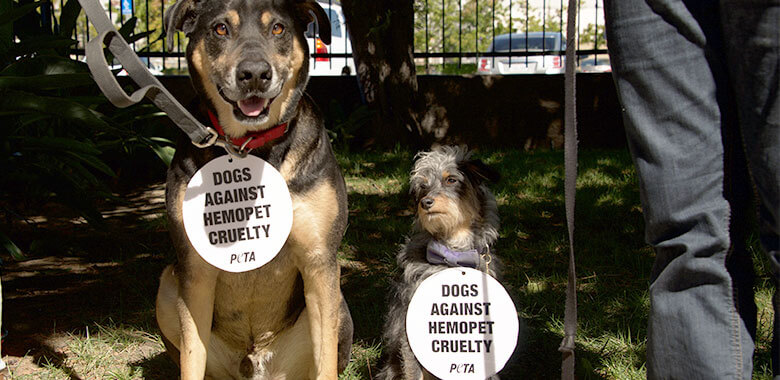In a society where the roles of animals are increasingly diverse, the discussion around working animals—particularly police dogs—raises pertinent questions about their rights and welfare. Working animals serve crucial functions, from tracking down suspects to detecting narcotics, making them invaluable assets to law enforcement agencies. However, a dichotomy exists between their heroic public image and the reality of their treatment. The ongoing discourse surrounding organizations like People for the Ethical Treatment of Animals (PETA) offers insight into who protects these sentinels of law and order and the ethical implications of their use.
At first glance, the sight of a police dog, confidently striding alongside its human partner, evokes a sense of admiration and respect. These canines are not merely pets; they are highly trained professionals. The impressive feats they accomplish—apprehending suspects, locating missing persons, and even providing therapeutic support—fascinate and inspire. However, beneath this veneer of heroism lies a more intricate narrative laden with ethical dilemmas. The question arises: are these remarkable animals provided with the care and advocacy they deserve, or are they merely tools of enforcement?
The welfare of police dogs is a subject of burgeoning interest. High-profile cases of abuse and neglect have spotlighted this issue, prompting organizations, including PETA, to engage in rigorous advocacy. The perception of police dogs as working animals often leads to a sense of detachment regarding their treatment. Many individuals fail to recognize that these dogs experience stress, injury, and even emotional trauma in the line of duty. PETA emphasizes the importance of recognizing these canines as sentient beings with inherent rights rather than mere pawns in the criminal justice system.
PETA’s involvement in protecting working animals highlights a broader movement advocating for the ethical treatment of all creatures. Their campaigns seek to educate the public on the complexities associated with the lives of working dogs. For example, they emphasize that while police dogs undergo extensive training, they are still susceptible to fatigue and the psychological aftermath of their demanding roles. This complexity invites deeper reflection on how society values these animals—do we regard them as deserving of rights and compassion, or simply as assets to be utilized when expedient?
The ambiguity around the status of police dogs is further complicated by the varying standards of care and safety provided by different law enforcement agencies. While some adopt comprehensive welfare protocols for their canine units, others may overlook crucial aspects, leading to significant disparities in care. Consequently, many police dogs face dire situations, from inadequate housing conditions to inadequate medical treatment after injuries sustained on the job. This inconsistency reveals a systemic gap in advocacy, as the welfare of these animals is often overshadowed by operational priorities.
Arguments surrounding police dog welfare typically encapsulate a tension between duty and compassion. Proponents of police dogs’ roles in law enforcement advocate for their necessity in maintaining public safety, arguing that their contributions exceed the bounds of typical pet ownership expectations. This line of reasoning presents the notion that, because these dogs are ‘working’ animals, they should be held to a different standard, often minimizing their emotional and physical needs. However, this perspective neglects the essential fact that all animals, regardless of their role, possess rights rooted in welfare.
There is also an argument to be made concerning the societal implications of treating police dogs ethically. When communities observe police departments prioritizing the welfare of their canine counterparts, it fosters a positive relationship built on trust and respect. It reframes the narrative from one of utility to one of partnership. By investing in their welfare—encompassing proper training, medical care, and retirement benefits—law enforcement agencies can project a commitment to both public safety and animal rights. Such an approach resonates positively with the community, which may be disinclined to support organizations that appear indifferent to the well-being of sentient beings.
Retirement for police dogs is another critical area that necessitates scrutiny and reform. Often, once their service is complete, these dogs are left without a clear path to a comfortable and fulfilling life post-duty. Many face uncertain futures, with some ending up in shelters rather than retirement homes where they can enjoy their golden years. Organizations like PETA advocate for policies that mandate retirement protocols, ensuring that these retired dogs receive the care and affection they deserve after years of dedicated service.
The discussion surrounding the protection of police dogs inevitably leads to larger conversations about the role of animals in society. While they perform specialized roles that command respect, the ethical treatment of all animals hinges on recognition of their intrinsic value beyond utility. Re-evaluating perspectives on working animals opens doors to substantive changes in how society views and treats these members of our communities.
In conclusion, as the discourse continues, it is evident that organizations like PETA play a vital role in raising awareness around the rights of police dogs. They remind society that the commitment to animal welfare extends beyond mere words; it requires action and empathy. The conversation invites communities to reconsider the complexities of animal roles within the justice system and encourages a reevaluation of the ethical standards governing their treatment. As advocates for social justice strive for balance between safety and compassion, the plight of police dogs serves as a poignant reminder that all beings, regardless of their roles in society, are entitled to respect and protection.










